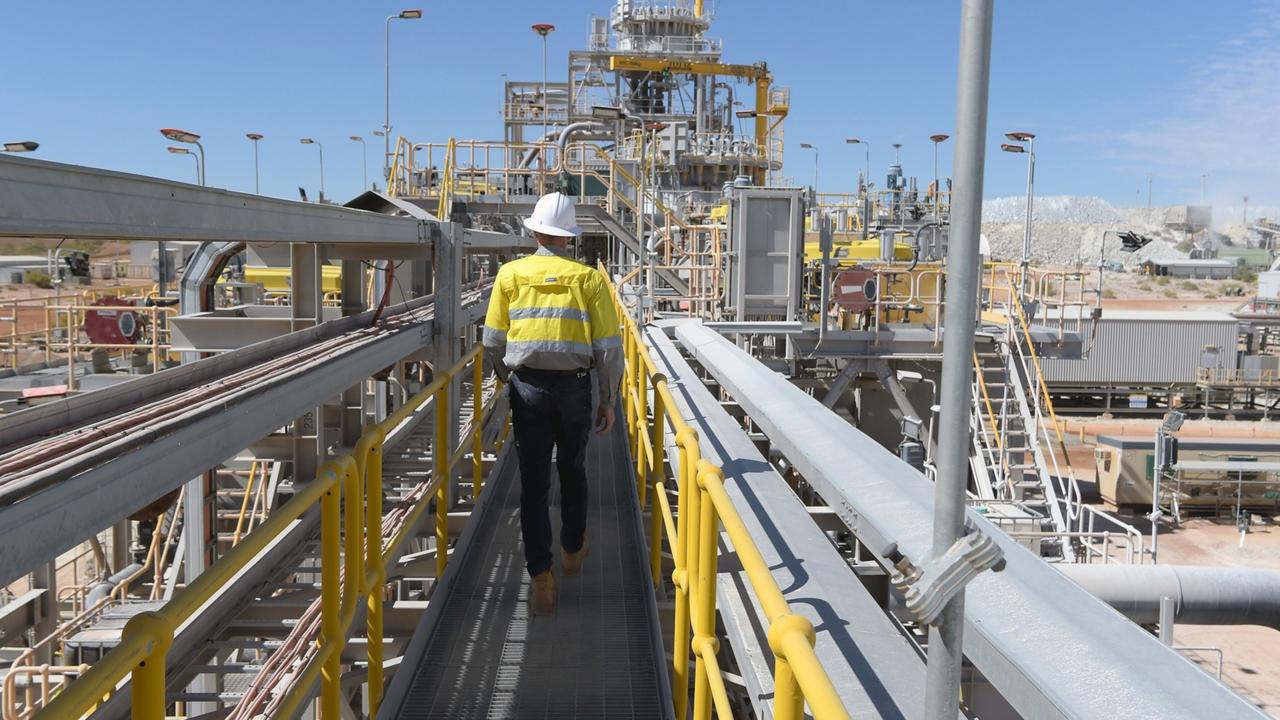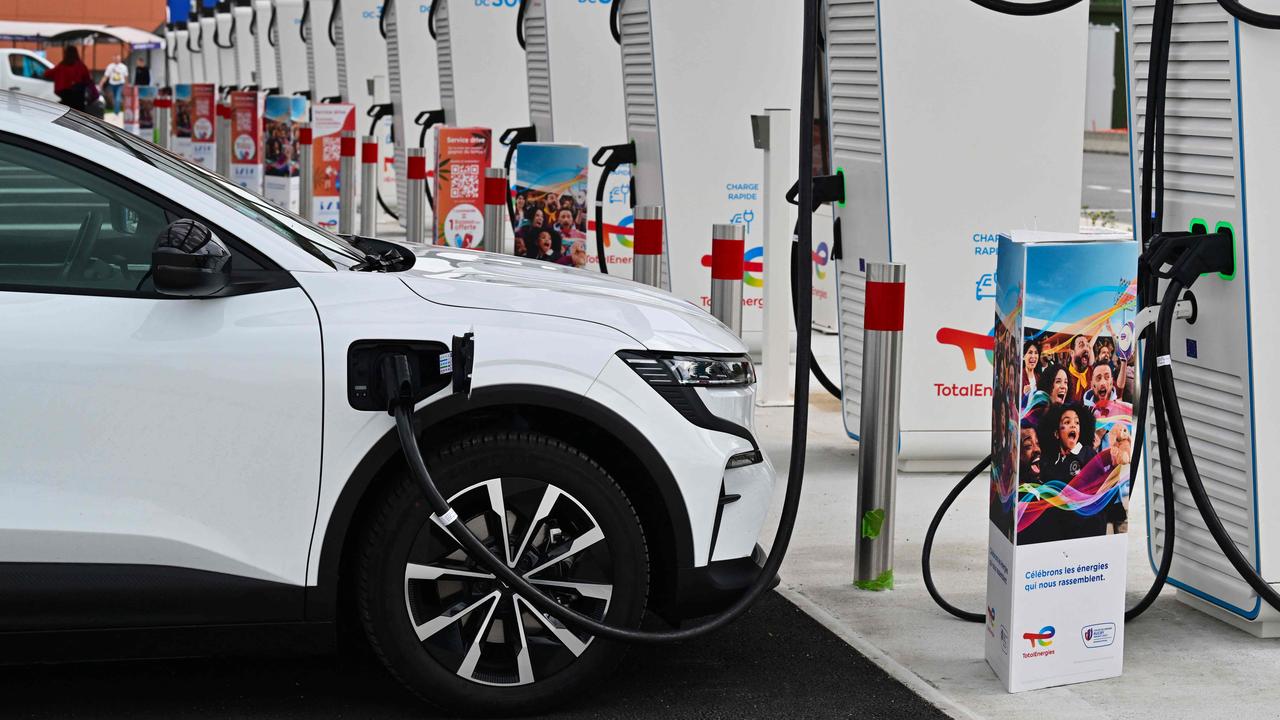Staggering 86 per cent collapse spells trouble
A major Aussie firm has seen billions wiped off its balance sheet, and that is one of the companies doing well in a troubling new downturn.
As the world races towards a lower carbon reality, Aussie companies are losing billions of dollars as one of the key resources to make it happen collapses in price.
One large Australian miner has revealed its profits dropped a staggering 86 per cent over the past year and it’s feared projects and jobs around the nation could be put at risk by the downturn.
One of the key components currently used to make electric vehicle batteries, lithium, sparked a modern-day gold rush over the past decade as miners frantically drilled to find deposits all over the world.
Few nations are blessed with natural resources like Australia, with naturally huge reserves of the mineral were found, dug up and sold for eye-watering profits.
We became the biggest lithium-producing nation on the planet in 2023, producing 86,000 metric tonnes of lithium last year, up from 74,700 metric tonnes in 2022.

However, the situation has changed dramatically in the space of 12 months.
Demand for EVs has stalled in the current slowing economic climate, leading to a collapse in lithium prices — leading Aussie miners have already begun to curb production rates.
Australian lithium exports are forecast to decrease to $18 billion this year and $16 billion in 2024–25, down from the record $20 billion in 2022–23.
Even the companies doing well have recorded staggering drops in profit.
Pilbara Minerals managing director Dale Henderson warned that companies that fell victim to “lithium fever” are likely to cop it even harder in the coming months due to weak prices.
He said lithium prices had dropped another 22 per cent since the start of the current financial year, following a 67 per cent fall over the 2024 financial year.
Global financial giant UBS said this week slashed its lithium price forecasts for the 2025 and 2026 calendar year by up to 23 per cent — signalling major pain to come for miners.
In its forecast it cautioned that not enough supply was being deferred, and global demand for electric vehicles was softening.

It was forecasting a price of $US770 a tonne for the next 12-18 months. To put this in perspective, the average price Pilbara Minerals was paid for its lithium over the past financial year was $US1176 a tonne — and that price was down 74 per cent on the previous year.
This price collapse has left miners in Australia reeling.
Pilbara reported an underlying net profit for the year to June 30 of $318m. It may sound healthy on first glance, but this is down an eye-watering 86 per cent from last year’s $2.27 billion.
Other companies have been forced to make some tough decisions.
Earlier this year, it was revealed that the country’s biggest and most lucrative lithium mine, Greenbushes, will reduce production to match lower demand.
Since, then Core Lithium has suspended mining at its Northern Territory-based Finniss project. Arcadium Lithium paused its investment at James Bay in Canada and is considering idling its Mt Cattlin mine in Western Australia. Piedmont Lithium delayed its US Carolina project by two years, while Albemarle scaled back operations for its Kemerton hydroxide refinery.
Mr Henderson said Pilbara has avoided serious trouble because it didn’t get sucked into the “lithium fever” that gripped many other miners — and that it “chose not to rush out and buy assets when lithium prices were high”.

“We chose to focus on getting better at the operating platform. Invest back in the base, preserve the balance sheet,’’ he told The Australian.
However, Pilbara and other Aussie miners are not out of the woods just yet.
In its dire forecast for lithium prices, UBS said it had lowered its outlook for electric vehicle sales, “with significant implications for lithium demand’’.
“With global automotive battery demand now up to 10 per cent lower through to 2030 (partly as a result of about 10 per cent higher plug-in hybrid EV share across the same period, and partly reflecting lower outright EV demand) this has a similar impact for lithium demand,’’ UBS said.
“While we note some supply is being deferred, it is not enough, and as a result we mark-to-market spot prices and downgrade 2025 and 2026 calendar year prices by up to 23 per cent. On equities, this leads to significant near-term earnings per share downgrades.’’
UBS said while it had not observed any large-scale lithium project curtailments yet, “it is clear that the stress of low prices needs to drive production curtailment and delay/deferral of growth projects’’.
In a more optimistic outlook, Morgan Stanley said lithium prices were already below its fourth-quarter forecast of $US10,000 a tonne, but it believes they are nearing a bottom.
“With slowing China output and future growth plans slowing, the balance could tighten into peak season,” Morgan Stanley’s commodity strategist Amy Gower told the AFR. “This could allow lithium prices to stabilise, or even bounce modestly from current levels.”






